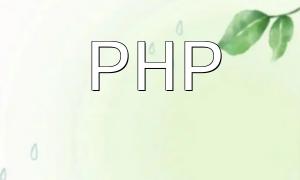In recent years, with the rapid development of artificial intelligence technologies, Generative Adversarial Networks (GANs) have become a hot topic in computer vision research. Baidu AI provides an open platform for developers to integrate its GAN API to generate images. This article will provide a detailed guide on how to integrate Baidu’s GAN API with PHP, including obtaining API keys, installing PHP extensions, and writing code.
First, you need to register for a Baidu Cloud account and create an application. After logging into the Baidu Cloud console, go to “Product Services” > “Image and Lifestyle” > “Generative Adversarial Network.” In this section, click the “Create Application” button, fill in the application name and description, and choose “API Key” as the integration method. Finally, click the “Create” button to complete the application registration.
Once the application is created, go to the application management page where you will see the generated API Key and Secret Key. Keep these keys safe, as they will be used in subsequent API calls.
To send requests to the Baidu GAN API, you need to install the cURL extension for PHP. If your PHP environment doesn’t have cURL installed, you can install it based on your operating system:
Next, use Composer to install the Baidu AI SDK. First, create a composer.json file in the root directory of your project and add the following content:
{
"require": {
"baidu-aip/sdk": "^1.10"
}
}
Then, run the following command in the terminal to install the SDK:
composer install
Once the installation is complete, create a file named image_gan.php and add the following code:
<?php
require 'vendor/autoload.php';
use BaiduAipImageClassify\ImageClassify;
// Set API Key and Secret Key
const API_KEY = 'Your API Key';
const SECRET_KEY = 'Your Secret Key';
// Call Baidu AI Generative Adversarial Network API
function generateImageGAN($image, $type = 'anime') {
$client = new ImageClassify(API_KEY, SECRET_KEY);
$options = [
'type' => $type,
'image' => base64_encode(file_get_contents($image))
];
try {
$result = $client->gan($options);
return $result['image'];
} catch (BceServiceException $e) {
echo $e->getStatusCode();
echo $e->getMessage();
return false;
} catch (BceClientException $e) {
echo $e->getMessage();
return false;
}
}
// Example usage
$image = 'path/to/your/image.jpg';
$type = 'anime';
$result = generateImageGAN($image, $type);
if ($result) {
file_put_contents('path/to/save/result.jpg', base64_decode($result));
echo 'Image generation successful!';
} else {
echo 'Image generation failed!';
}
?>
Note: Replace 'Your API Key' and 'Your Secret Key' with your own API credentials.
After saving and closing the image_gan.php file, you can run it using the PHP command line tool, or place the file in the directory of a web server that supports PHP parsing.
If the code runs successfully, you will see the message “Image generation successful!” in the console, and an image processed by the GAN will be saved at the specified path.
By following the steps outlined above, you have successfully integrated Baidu's Generative Adversarial Network API with PHP. You can now build an image generation application using Baidu's AI. This tutorial can serve as the foundation for more advanced applications. You can further expand and optimize the system to generate different types of images or incorporate other AI technologies to enhance the results. We hope this guide helps you to get started with Baidu’s GAN API and sparks more creativity in your projects!










